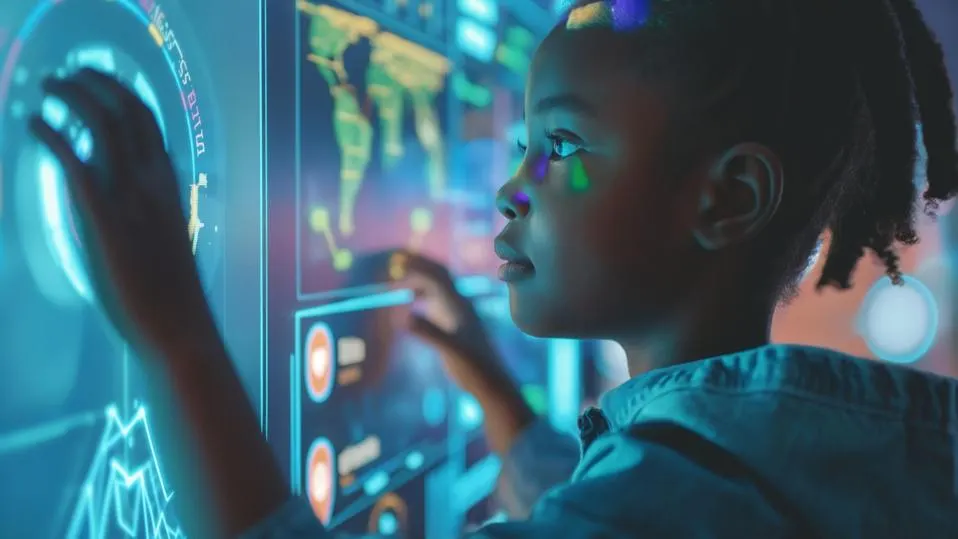Meta Description:
Explore how Artificial Intelligence is revolutionizing education in 2025. Discover AI’s impact on classrooms, personalized learning, and teaching methods.
Introduction:
Did you know that AI-powered education is expected to grow by 30% in the next five years? As we step into 2025, Artificial Intelligence (AI) is no longer just a buzzword—it’s shaping the future of education in ways we never imagined. From personalized learning experiences to smart classrooms, AI is transforming how students learn and how educators teach.
In this post, we’ll dive into the latest AI trends in education and explore how this technology is changing classrooms across the globe.
What is AI in Education?
Artificial Intelligence in education refers to the use of AI technologies like machine learning, natural language processing, and data analytics to enhance the learning experience. AI can automate administrative tasks, provide personalized learning, and even assist in curriculum development.
Key Benefits of AI in Education:
- Personalized Learning: AI analyzes student performance and customizes learning paths.
- Data-Driven Insights: AI collects and interprets data to help teachers understand student needs.
- Automation of Administrative Tasks: AI can grade assignments, manage schedules, and streamline paperwork.
The Role of AI in Shaping Classrooms in 2025
As AI continues to evolve, its role in the classroom will expand, and it will become an essential tool for educators. Here’s a closer look at how AI is shaping the future of classrooms:
1. Adaptive Learning Systems:
AI-powered adaptive learning systems use algorithms to track a student’s progress and adjust the difficulty level of lessons in real-time. For example, platforms like DreamBox and Squirrel AI offer tailored learning experiences, providing immediate feedback and making sure students are always challenged at the right level.
2. Smart Classrooms:
AI integrates with the Internet of Things (IoT) to create smart classrooms. With sensors and AI-based software, classrooms can adjust lighting, temperature, and even analyze student engagement through facial recognition. This results in an optimized learning environment that enhances focus and productivity.
3. AI Tutors & Chatbots:
AI-powered chatbots like Jill Watson and MATHia serve as virtual tutors. These AI tutors help students solve problems, answer questions, and provide support outside of school hours. AI’s ability to provide 24/7 assistance is a game-changer in education, especially in remote learning.
How AI Enhances Teacher Effectiveness
AI doesn’t replace teachers but enhances their effectiveness. By automating repetitive tasks, AI gives teachers more time to focus on what matters: teaching and interacting with students.
AI in Assessment and Feedback:
AI tools can analyze students’ assignments and exams in real-time, providing teachers with quick, data-driven insights into their performance. This helps educators identify areas of improvement and customize lesson plans accordingly.
Professional Development:
AI is also used for teacher training programs. Through AI-powered simulations and virtual classrooms, teachers can improve their skills and learn best practices without leaving the comfort of their home.
Challenges and Concerns of AI in Education
Despite the many advantages of AI, there are some challenges that need to be addressed:
- Privacy Issues: AI collects massive amounts of student data, raising concerns about data privacy and security.
- Lack of Access to Technology: Not all students and schools have access to AI tools, especially in developing countries.
- Dependence on Technology: Over-reliance on AI could reduce human interaction and creativity in education.
Conclusion: AI’s Impact on the Future of Education
As we move further into 2025, the role of AI in education will continue to grow. It holds the promise of making education more accessible, personalized, and efficient. However, it’s important to balance AI with traditional teaching methods to ensure the human touch in education is never lost.
Are you ready for AI to reshape your classroom or learning experience? The future of education is here, and it’s powered by Artificial Intelligence.
Call to Action:
What are your thoughts on AI in education? Are you already using AI tools in your classroom or workplace? Share your thoughts in the comments below!


